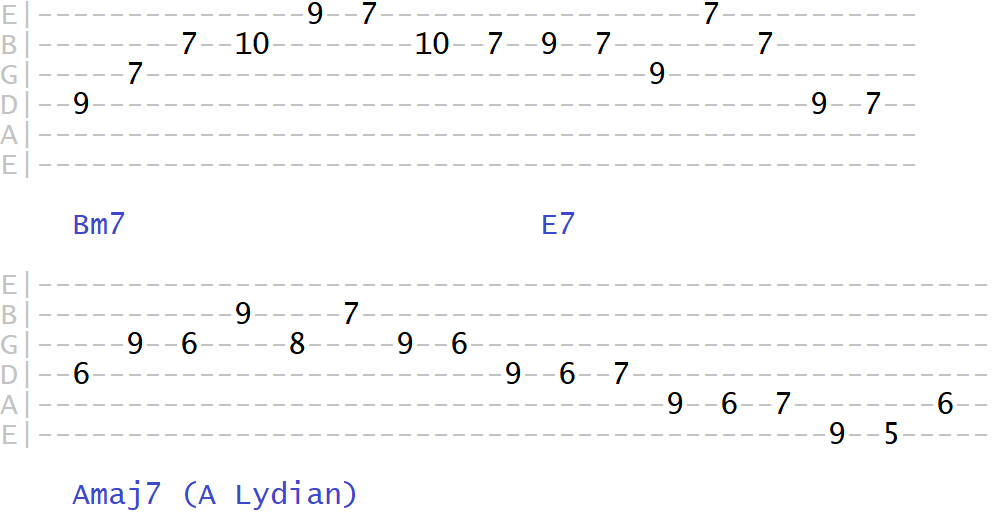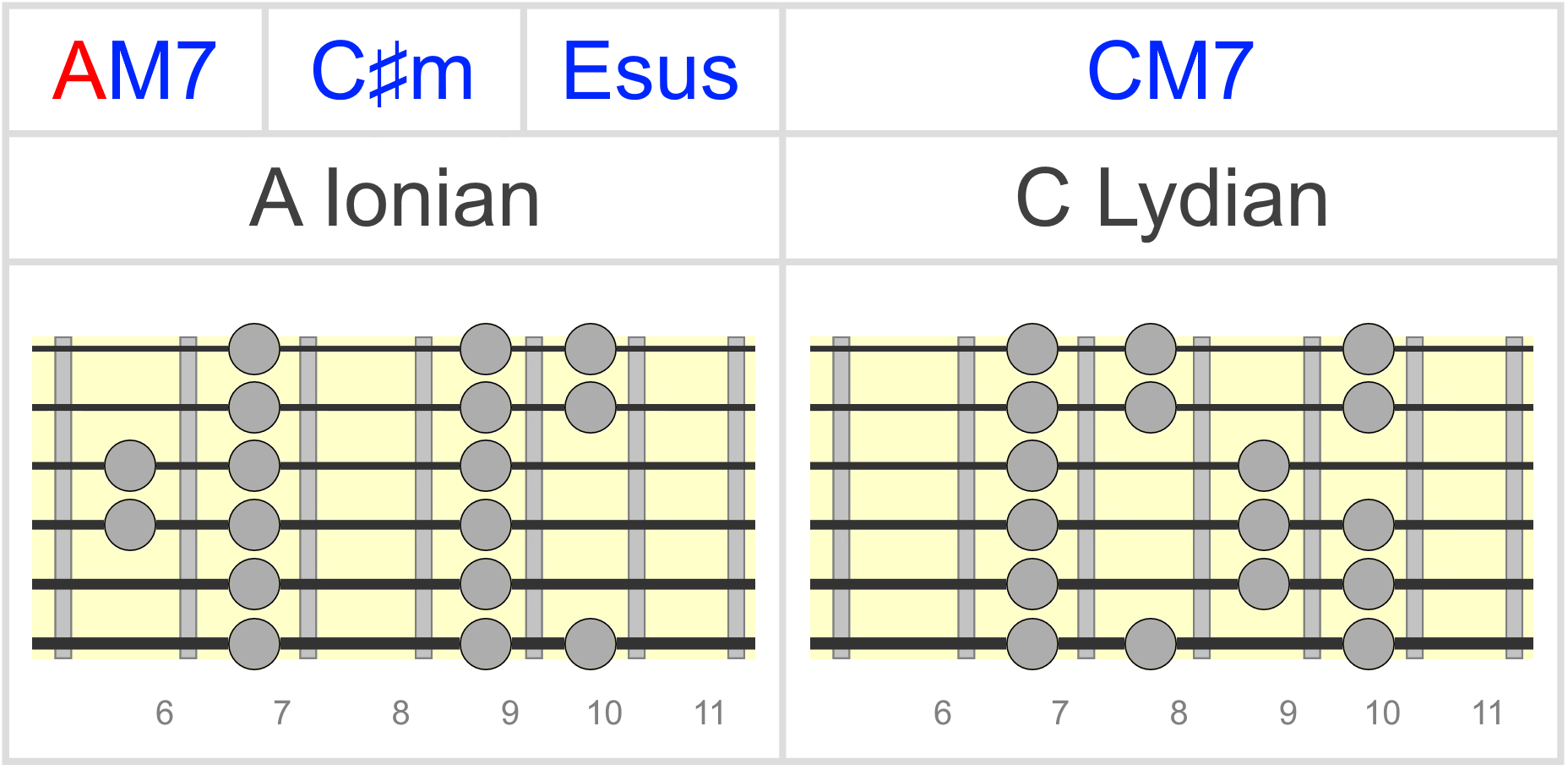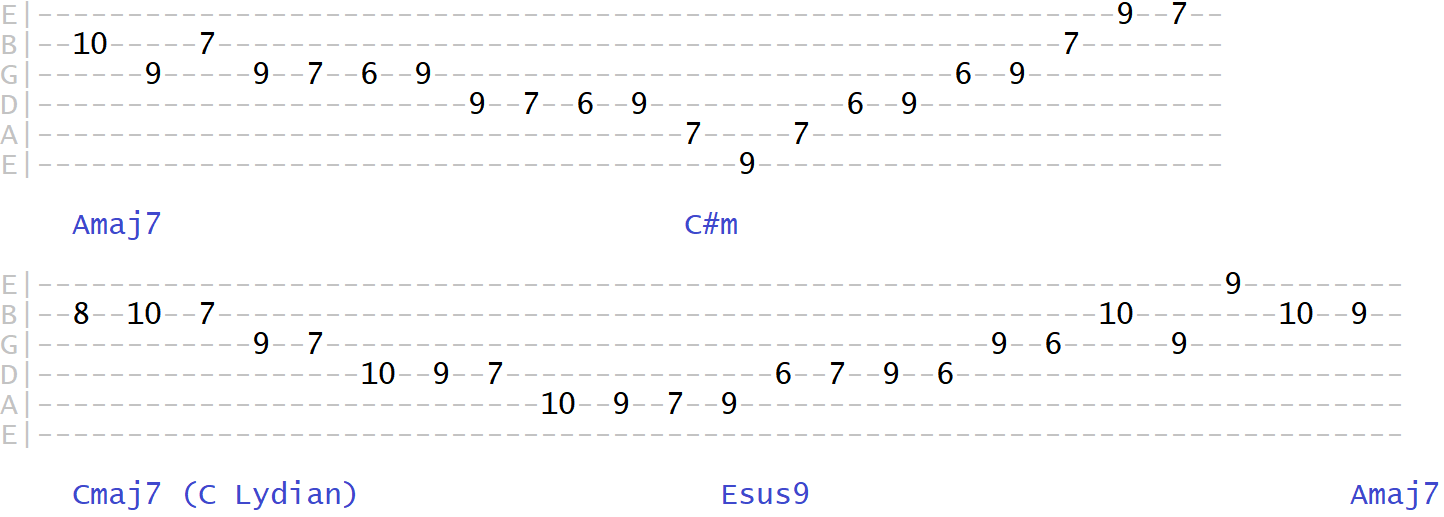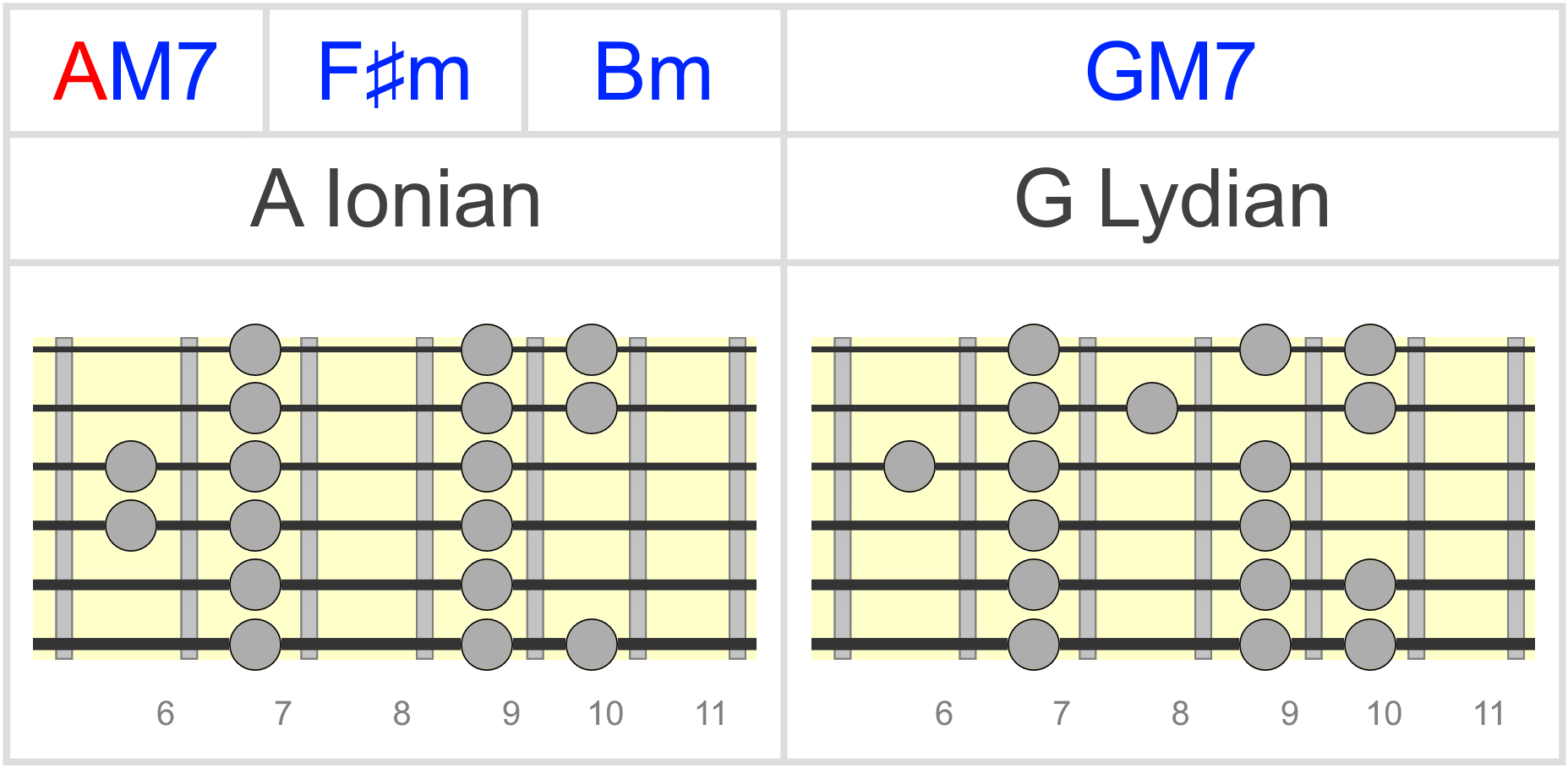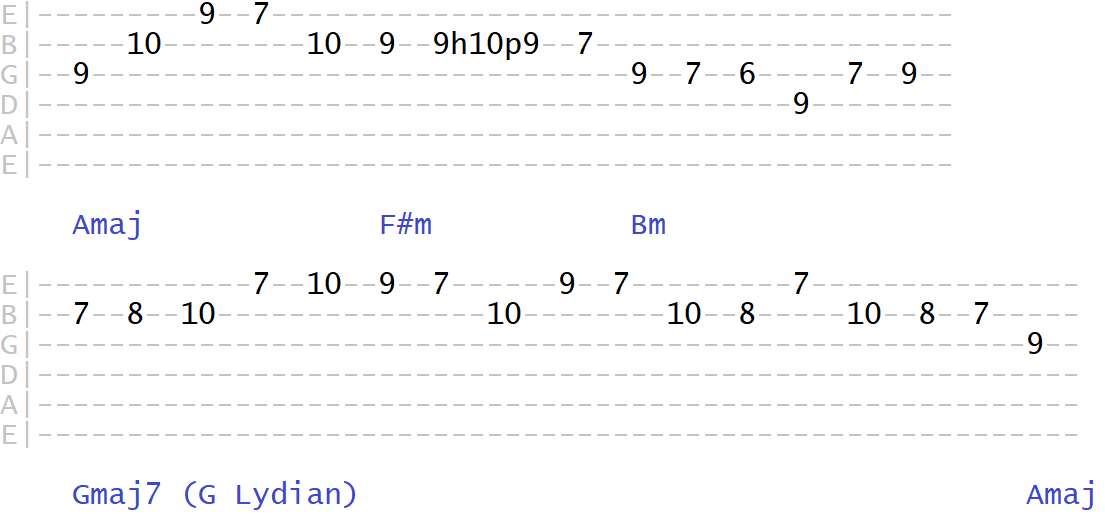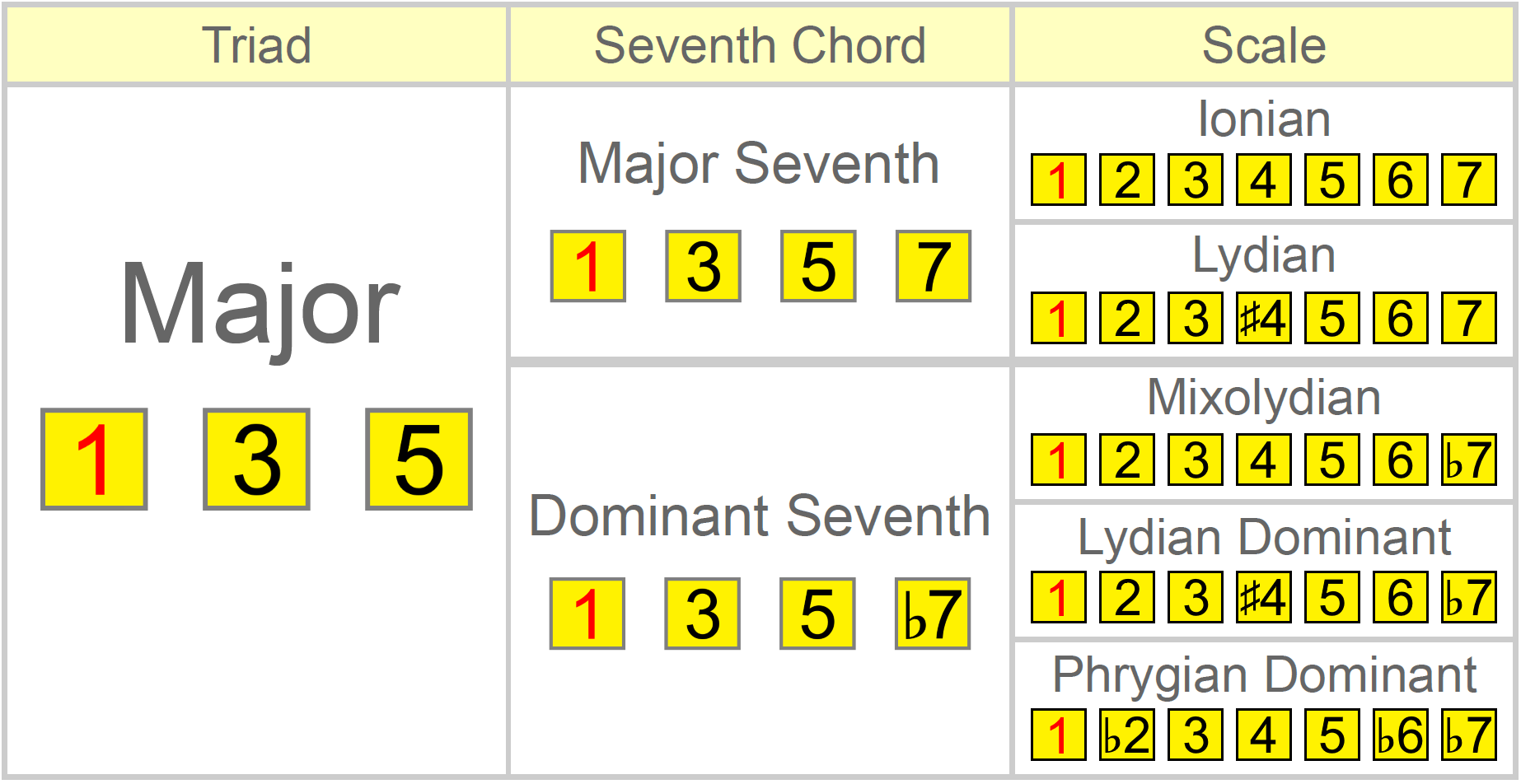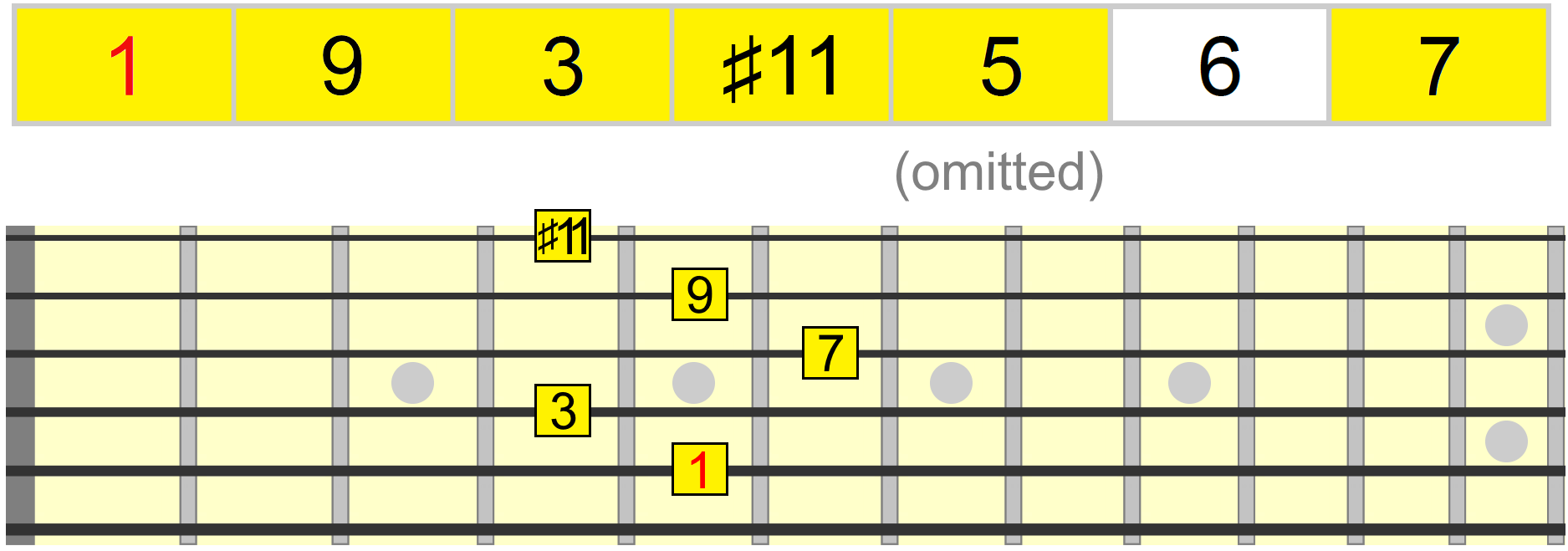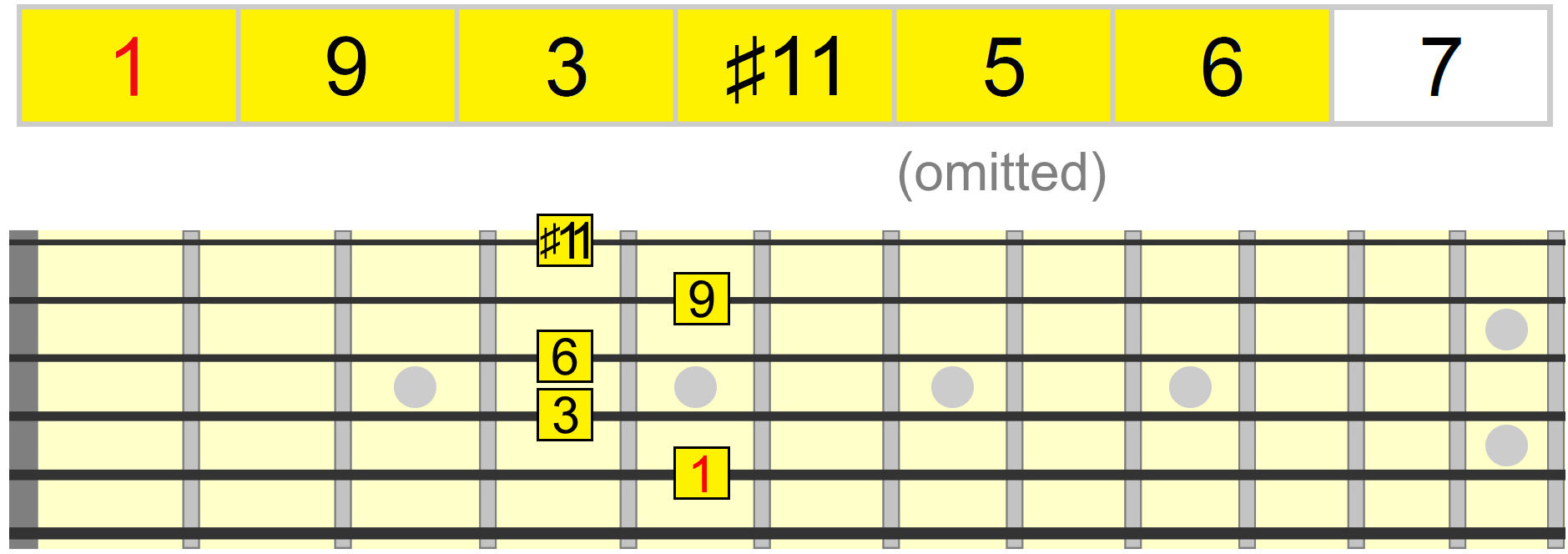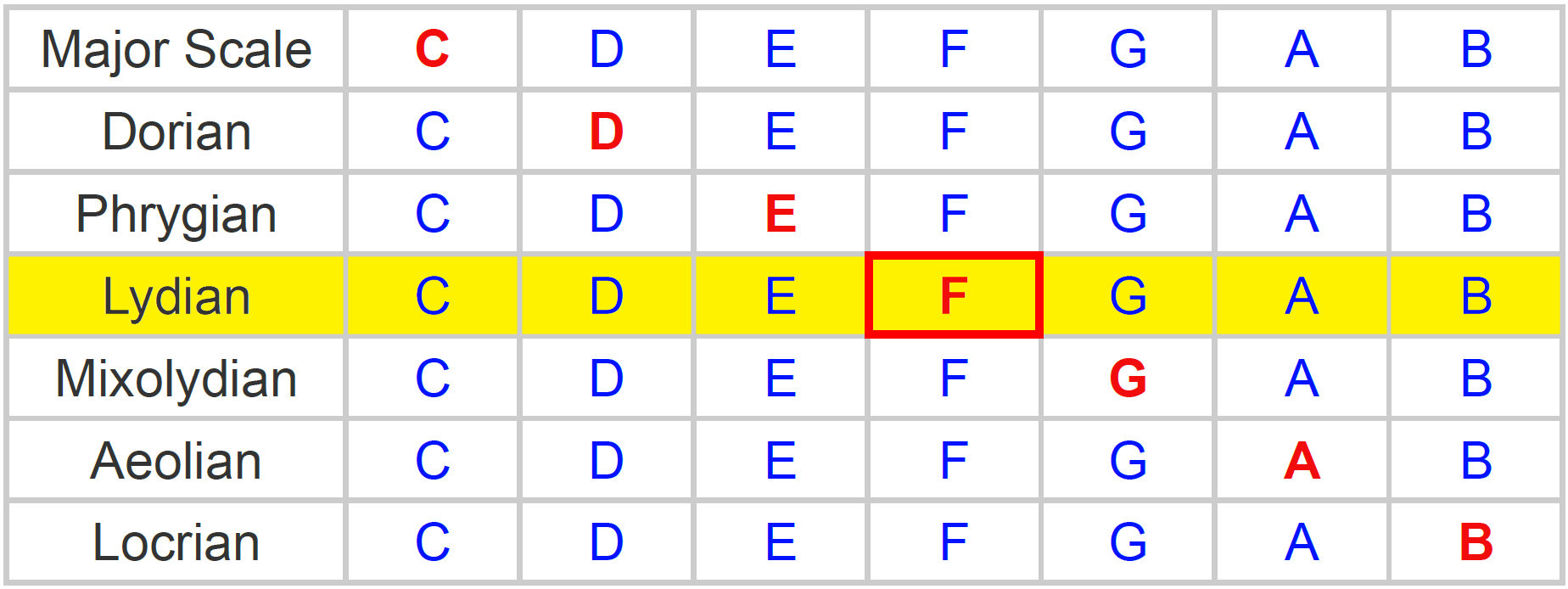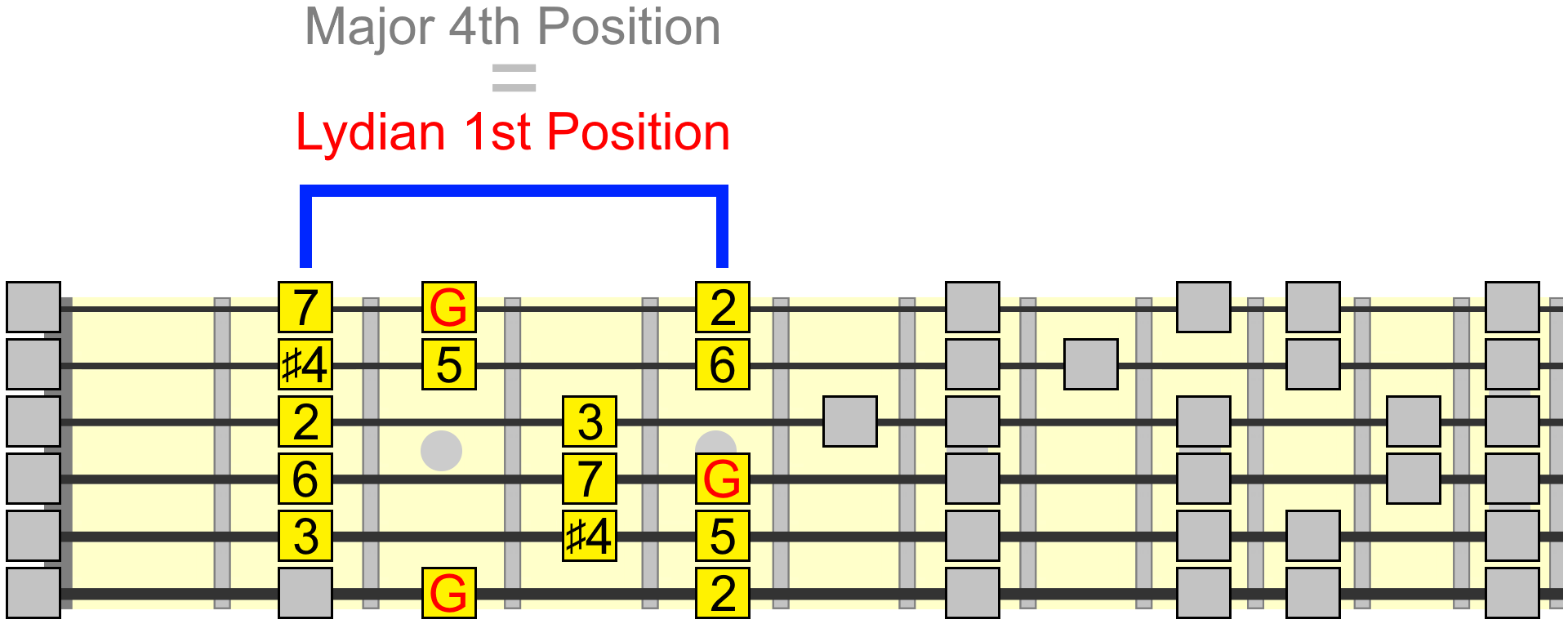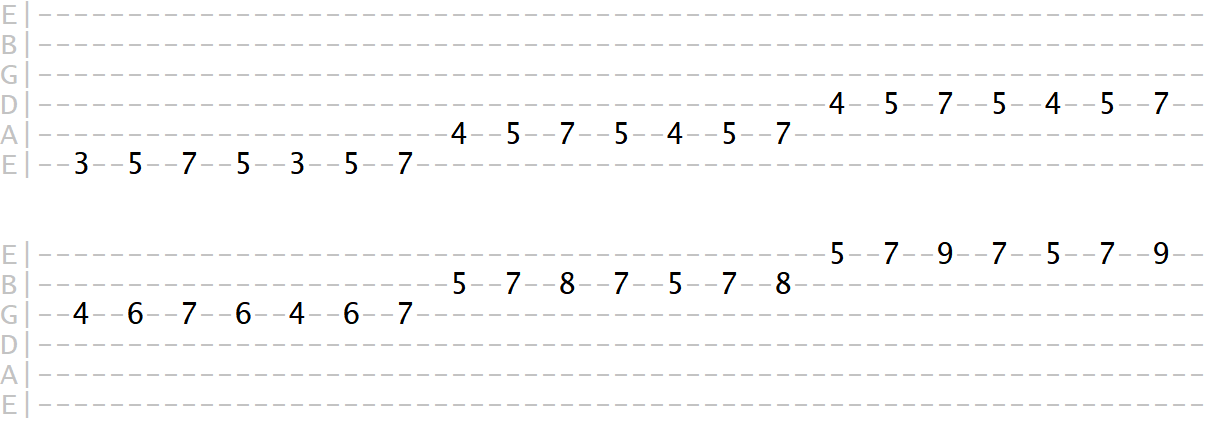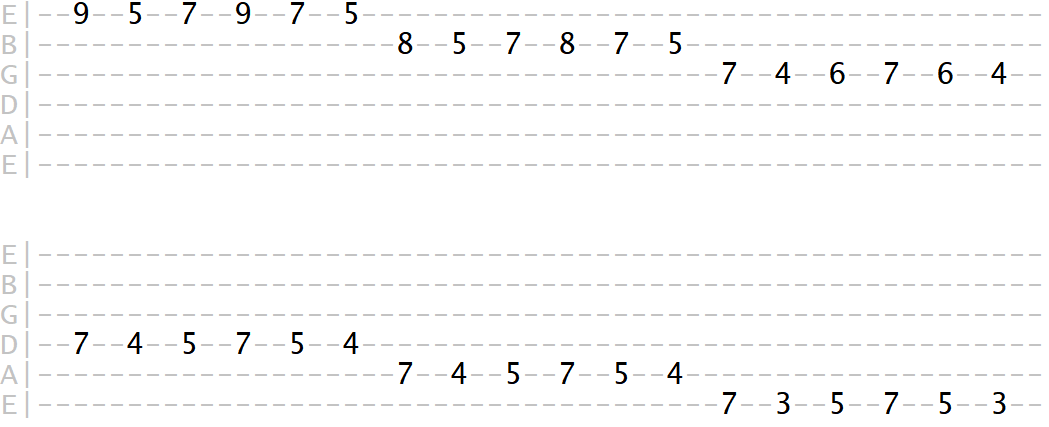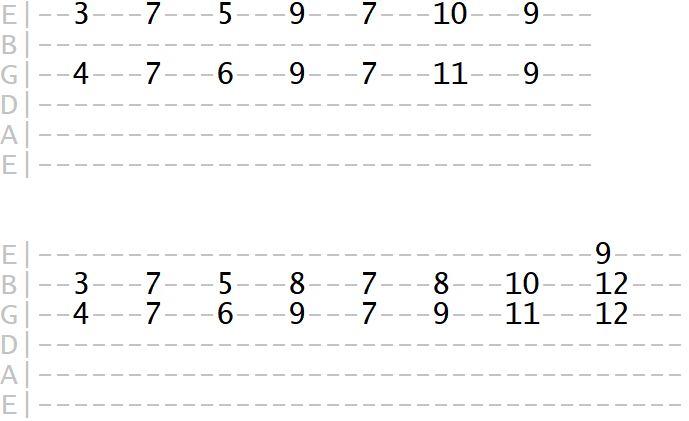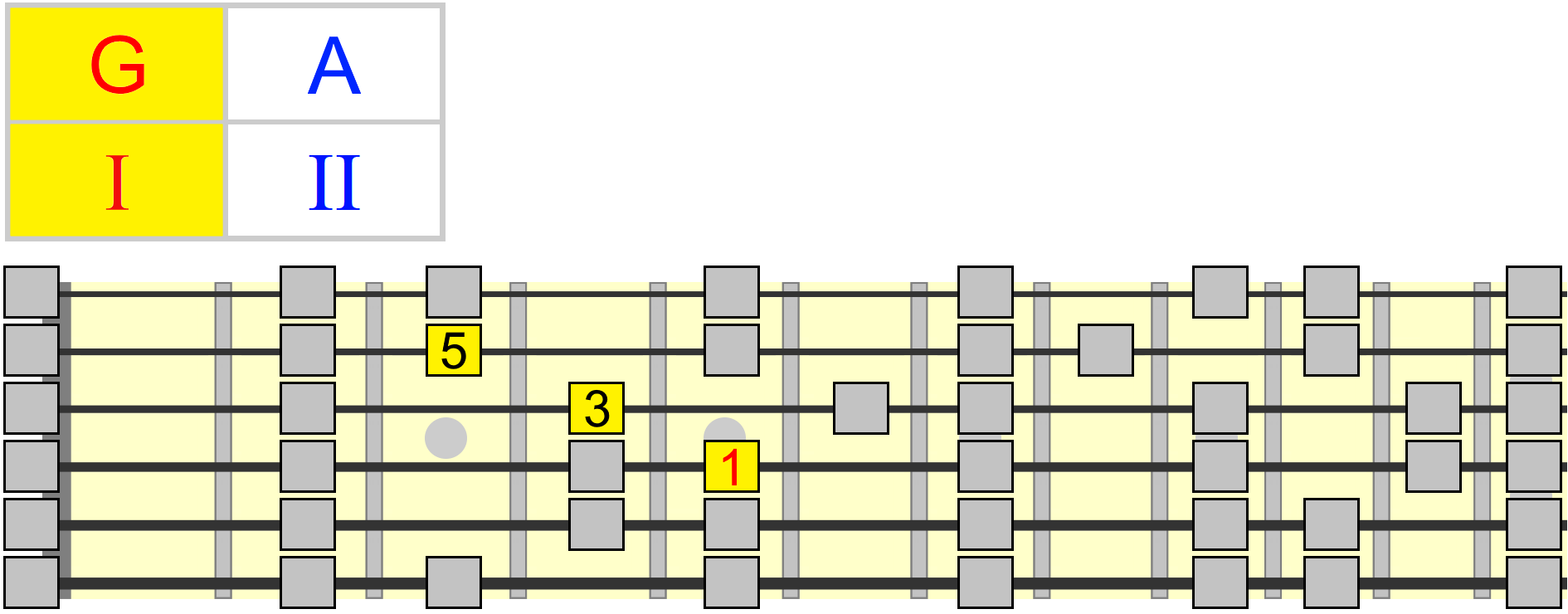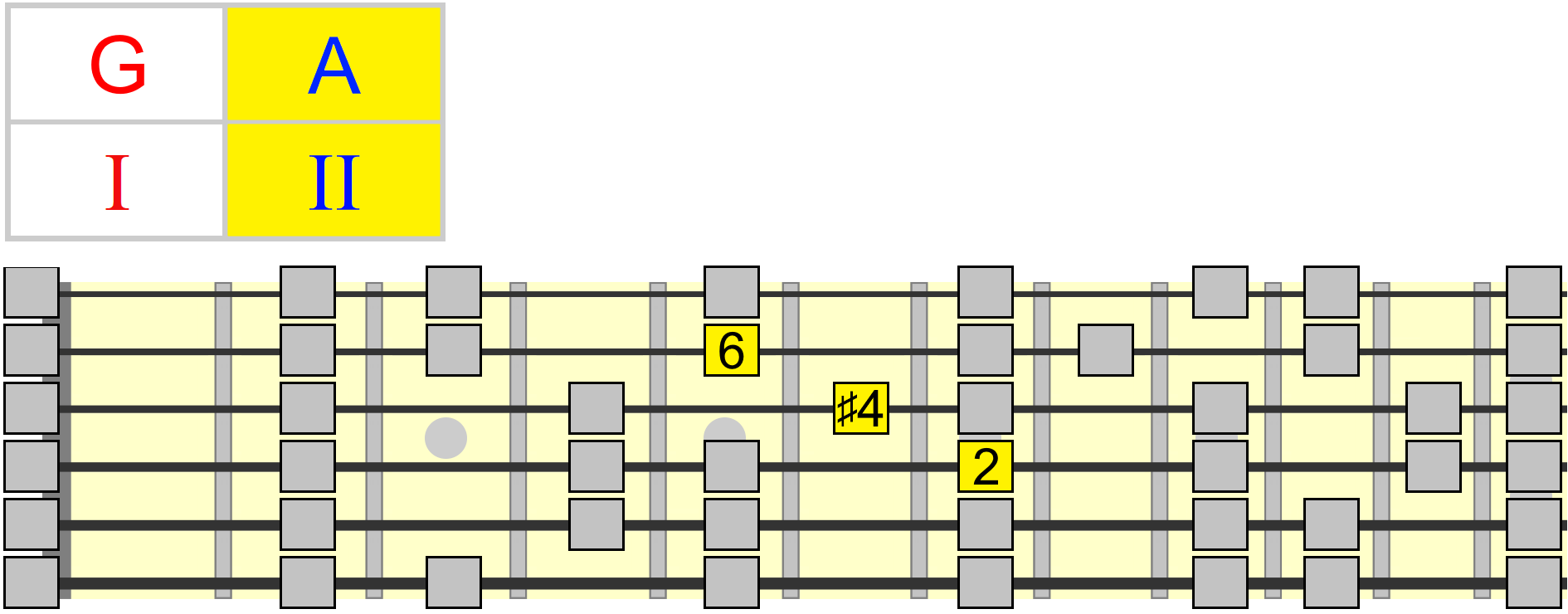Lydian as a Scale
First, let's consider Lydian in the context of a seven-tone (heptatonic) scale.
Here, I'm comparing Lydian to its closest neighbour in terms of interval structure - the major scale, also known as Ionian...
As we can see, the only difference between the two scales is on the 4th degree. The major scale has a perfect or natural 4th (simply 4). Lydian has a sharp 4th, also called an augmented 4th (♯4)
If we play out these scales in parallel across the 1st string, starting on E, we can see that there's only one fret difference between the 4th and augmented 4th...
But this single difference creates quite a different sound. Starting with the major scale, with the 4...
And now Lydian with the ♯4...
Lydian Over Chords
So that augmented 4th is what gives Lydian its distinctive major sound, as Lydian's tonic or root triad is major...
This tells us that Lydian will theoretically work over major chords with the same root. For example, E lydian over Emaj...
There are countless examples of Lydian's magic being used in music, some subtle, some more explicit. And it shows up in the strangest of places. A beautiful and iconic use of Lydian can be heard in the Sony/Columbia Pictures ident, which really captures the essence of the Lydian sound. Can you hear the instances of the ♯4?
The interesting thing about this short piece is how it crashes from C Lydian (over a C major backdrop) into E Lydian (E major backdrop). This demonstrates how powerful Lydian is in making shifts in major harmony all the more dramatic!
Lydian Backing Tracks
Start your exploration of Lydian's sound with this E Lydian track. For now, you can just use the high E string. Later, you can make use of all six strings using the patterns you learn. But for now, this is just about training your ear to that ♯4 major sound...
If you prefer, you can use the below "drone" tracks to experiment with the Lydian concepts in this lesson. There's no beat, so you can set your own metronome/drum tracks going or just explore at your own pace...
E Major (E Lydian)
B Major (B Lydian)
G Major (G Lydian)
D Major (D Lydian)
You can find more Lydian jam tracks with guide patterns to accompany this lesson right here
The Major Seventh
It's also worth considering Lydian's seventh chord type. Lydian has a major 7th interval, making its root chord a major 7th chord...
For example, we could play E Lydian over Emaj7...
Now, you'll notice that the root chord of Ionian is also a major 7th. But composers have often favoured Lydian for major 7th chords because of how the augmented 4th colours the chord.
In jazz, for example, even the tonic major 7th chord of a major key progression would typically be expressed with Lydian, such as this example in A major...
More generally, however, Ionian tends to be used for the major key tonic, with Lydian covering any major 7th chords that might occur away from it.
Some examples.
In the key of A major, changing from A Ionian to C Lydian over Cmaj7. To keep things simple, I'm using a box pattern for each scale around the same neck position. Shortly, we'll learn how to play Lydian over the entire neck using a familiar pattern...
Again, in the key of A major, changing from A Ionian to G Lydian over Gmaj7. Here I'm using a different box based on G Lydian's pattern...
Of course, the chord being played doesn't have to be a major 7th for Lydian to work, but this is where your judgement comes in. By training your ears to Lydian's sound, specifically that augmented 4th interval, you'll have a better idea when to use it in a chord progression.
The below diagram shows us how the chord type being played connects to our scale options...
You can explore this concept of connecting chords and scales (or harmony and melody) in great depth in my Chord Connections course.
Extended Lydian Chords
Lydian also builds extended chords by adding the ♯4, along with other colour tones, to the major triad. When the #4 is voiced in a chord, you tend to see it written as ♯11. Some examples...
A♯11
Amaj7♯11
Dmaj9♯11
Dadd6/9#11
So when the ♯4 is voiced in the major or major 7th chord, Lydian is a good scale choice.
Here's how we might superimpose a Lydian pattern on to the above 5th string root chord. You might find it useful to connect scale patterns and chord shapes in this way, even if it's just to give you a familiar starting position...
Lydian as a Mode of the Major Scale
Lydian can also be seen as the 4th mode of the major scale.
For example, F Lydian would be the equivalent of playing the C major scale from its 4th degree of F, containing the same 7 notes as C major...
This means that we can use our knowledge of the major scale's pattern to cover Lydian, meaning you don't have to learn an entirely new pattern.
I cover this concept of connecting scales/modes to their "parent" patterns in my Ultimate Roadmap book. But let's look specifically at Lydian...
Connecting Lydian to its Major Scale Pattern
We can use a simple visualisation trick to connect the Lydian root to its parent major scale pattern.
Let's say we wanted to play B Lydian. First we'd locate the root of B on the 6th string...
The parent major scale root of B Lydian is F♯. As you can see, F♯ lies two frets up on the 5th string. This is the visual relationship we'll be memorising...
So to play B Lydian, we could use the F# major scale pattern...
To play G lydian, we could use exactly the same fret/string relationship to find its related major scale root - D...
So to play G lydian, we could use a D major scale pattern...
Another way to see it is using what we might call Lydian's first position box.
Since Lydian is the 4th mode of the major scale, it's first position box is the same as the major scale's 4th position box. So as long as we've learned the major scale's position sequence, we can connect the boxes from that 4th position...
Spatial Awareness
When playing through scale patterns, be aware of the position of defining colour tones such as the #4 in Lydian and how they relate to the triad tone positions. That's the 1, 3 and 5.
For example, the ♯4 is always one fret or a semitone below the 5 and two frets or a whole tone up from the 3...
By developing this kind of spatial awareness, you'll be able to target such tones more confidently.
Incidentally, this 1, 3, ♯4, 5 relationship can be played as a major arpeggio with a Lydian flavour...
Lydian Pattern Navigation
Of course, once you have the main roadmap, you'll want to try different ways of navigating the scale and connecting the boxes. For example, a "three notes per string" run from Lydian's first position...
Descending...
Or we could try introducing repetition and omission, such as this rootless G Lydian sequence...

And like any scale, we can harmonise Lydian using dyads (playing two notes simultaneously) such as these sequences...
Reharmonising Licks
Remember that, as Lydian uses the same notes and pattern as its parent major scale, we can essentially reharmonise our major scale licks, or any relative mode of that parent major scale, for use with Lydian.
For example, if we were playing over an F major chord, any of our C major, D Dorian, E Phrygian, G Mixolydian or B Locrian licks could be used to get the Lydian sound.
Lydian Modal Harmony
Finally, let's focus on how Lydian creates movements of harmony from its interval structure.
We established that Lydian's tonic (I) triad is major, taking the 1, 3 and 5 from the scale...
If we move each tone up to its next scale degree, we get Lydian's second triad, or II chord, which touches on that ♯4 interval...
This second degree triad is again major. In G Lydian therefore, we'd move from the G major tonic to an A major II chord...
You'll typically hear this movement over a fixed tonic root. For example, the movement from G major to A major would occur over a G bass...
This movement between two major triads a whole step apart is a very common Lydian based movement you'll hear in music. When you hear such a movement, Lydian is the implied mode.
A popular example of this movement can be heard in Fleetwood Mac's Dreams (F Lydian)...
And Joe Satriani's Flying In A Blue Dream (moves between C Lydian and A♭ Lydian)
As Lydian is the 4th mode of the major scale, this whole step major triad relationship is the equivalent of moving from the IV to the V chord...
And we'd use the same 7th chords for Lydian's I and II chords as we do the major scale's IV and V. The only difference with Lydian is that we resolve around the IV of the major scale instead of the I.
So in Lydian, the IV of its parent major scale becomes the tonic or I and the V of the major scale becomes II. The related sequence of triads continues from there...
You can try this simple Lydian movement on the open chords of E, A and D by moving the fretted shape up two frets.
For example...
We could effectively continue this sequence through the remaining triads built on each of Lydian's degrees, such as this example in E Lydian...
Final Words
The main thing to grasp here is that we're still essentially melodicising and harmonising the major scale, but the center of musical gravity has shifted to its 4th degree and its IV chord, hence 4th mode Lydian.
More importantly, you should be able to recognise the Lydian sound in such movements of harmony and melody by ear. It might awaken a particular feeling or emotion and it's these signifiers that you should seek to internalise as you explore the mode.
For more help with connecting harmony and melody, take a look at my Chord Connections course, where I take you through the foundations of how scales and chords are intrinsically connected.






